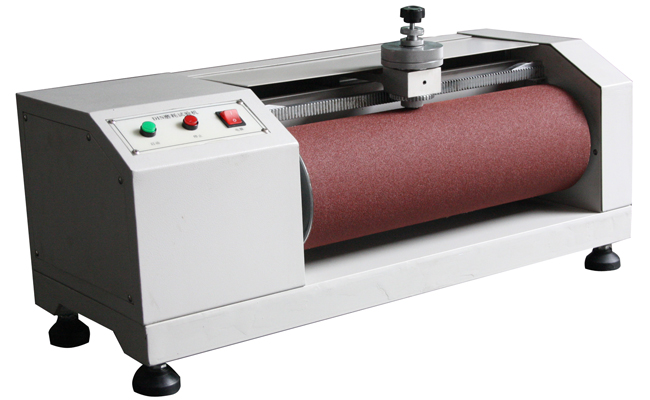- Qinsun Instruments Co., Ltd.
- Tell:+86-21-6780 0179
- Phone:+86-17740808215
- Address:No. 2578 Minhang District Gu Dai Road, Shanghai
- Contact:Mr. Li
- QQ:846490659
Characteristics of ceramic wear-resistant tester

The ceramic wear tester is designed and manufactured in accordance with the GB/T3810.7-2016 standard for the determination of surface wear resistance of glazed ceramic tiles. Place a certain amount of abrasive on the glaze of ceramic tiles, grind the abrasive on the glaze, and visually compare the differences in classification of the polished sample glaze.
The main structure and working principle of ceramic wear-resistant tester:
It consists of a body, transmission mechanism, supporting turntable, eight metal fixture boxes with rubber seals, and an electrical control device.
The motor is driven by a transmission mechanism, and the supporting plate operates at a speed of 300 revolutions per minute, resulting in an eccentricity of 22.5mm (e);
Therefore, each sample is subjected to a circular motion with a diameter of 45mm to grind the abrasive on the sample glaze. The electric control device controls the pre-set number of revolutions, and when the predetermined number of revolutions is reached, it can automatically stop.
It has a novel structure, smooth operation, low noise, and easy operation, and can be used for testing 8 or less samples simultaneously;
Due to the configuration of a digital time relay, the operator only needs to turn on the power without any monitoring, and it will automatically complete according to the set time (revolutions).
Technical characteristics of ceramic wear-resistant tester:
1. Adopting an eight station design, the experimental efficiency has been greatly improved.
2. Scientific structural design allows for easy loading and unloading of specimens without the need to move the cover plate.
3. Adopting a color touch screen control, the interface is clear and easy to understand, and the operation is intuitive and convenient.
4. Multiple testing modes are available for selection, with the ability to perform both pilling and wear resistance functions, and can comply with both national and American standards.
5. Imported programmable controller modular control, reliable, stronger anti-interference, less prone to crashes, suitable for long-term operation.
6. Adopting two working methods of subtracting and adding counts, with midway addition and cumulative counting, convenient for users to test.
Sample requirements for the use of ceramic wear-resistant instruments:
1. Type of sample: The sample should be representative. For ceramic tiles with different colors or decorative effects on the surface, attention should be paid to including all characteristic parts when sampling. The size of the sample is generally 100mm x 100mm. When using smaller sized samples, they should be firmly fixed on a suitable supporting material, and the boundary effect of narrow joints can be ignored.
2. Number of samples: The test requires 11 samples, of which 8 samples have been tested for visual purposes. Each grinding stage requires taking one sample, and then comparing three samples with the worn sample to observe visible wear marks.
3. Preparation: The sample glaze should be cleaned and dried.





